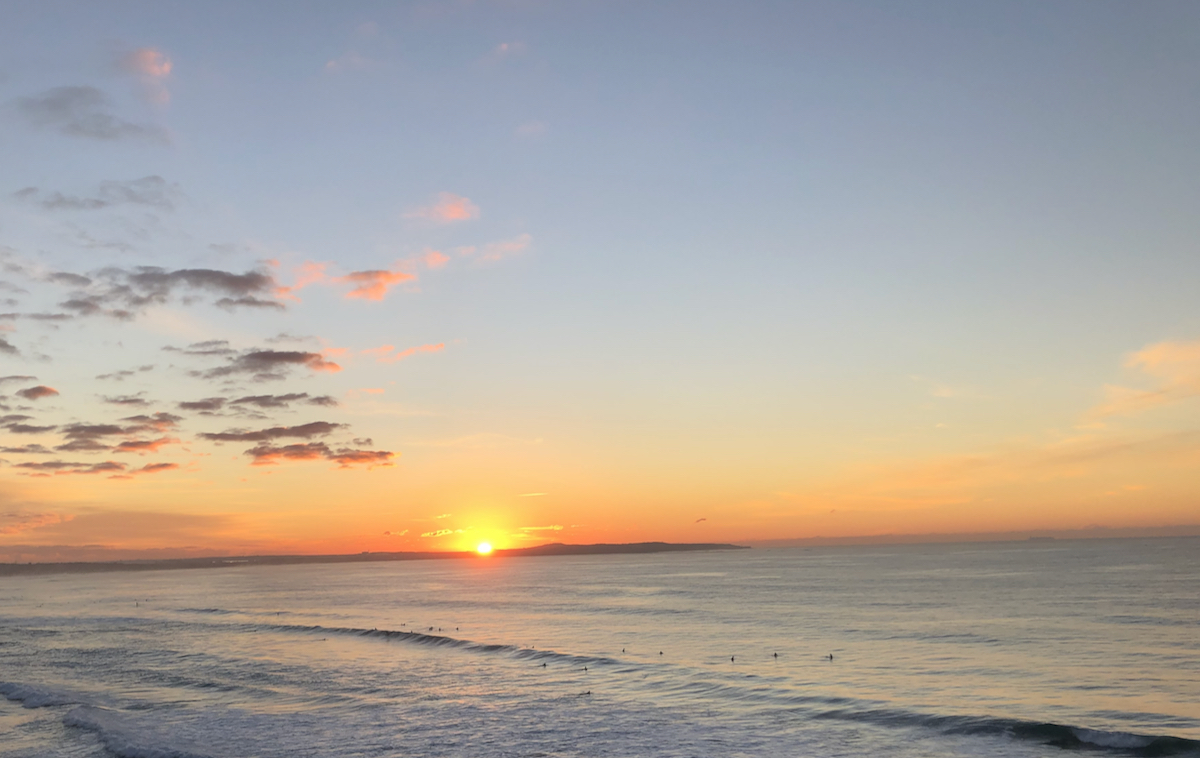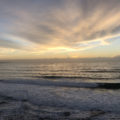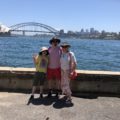One year ago today we arrived in Australia. We had been planning and preparing for this for years. Moving countries is not a new experience for me: the move to Australia was the seventh intercontinental transfer of my life to date. I know how to do it and pretty much what to expect in creating a new life in a new place.
Except… pandemic. Not much went as expected. We packed up our entire household ourselves, and Brendan moved it all into the garage for the movers to take, to minimize potential exposure. We flew to Australia with relatively little bother, counting ourselves very fortunate because many others were having a much harder time getting home. Upon arrival, we were quarantined for two weeks in a downtown apartment hotel – again, we had a far nicer time of it than many, and after the preceding extremely stressful months I was happy enough to pass two weeks with nothing to decide, no meals to procure, and not much I had to do.
By the time we left quarantine on January 6th (yes, that January 6th – but it was still January 5th in the US) Brendan and I had both negotiated the transfer of our US jobs (his with Netflix, mine with AWS) to Australia. We both continued to work while frantically searching for a place to rent, and enjoying some relatively normal life outdoors. At that time Sydney was masking and requiring QR code check-ins to public venues, because there’d been an outbreak of COVID in one part of the (very sprawly) metropolis, but this was far more freedom of movement than we’d had in California for most of the year.
Mitchell started 5th grade over again on January 29th – the Australian school year begins in January, and we decided to give him the no-stress option of repeating half a year rather than trying to jump him ahead half a year, especially since the half of 5th grade he’d already done had been via Zoom, with questionable efficacy. (Not the teacher’s fault – no one was really ready to do distance education, still.)
We moved into our rented apartment with a fabulous view of water, and cockatoos for company, in mid-February. We kept saying we’d take a vacation (we had not had one since the preceding February), but never quite got around to it, in part because most of Australia was still closed to us.
Australia had kept itself largely covid-free by a very harsh closure of its international borders. Some Australian states closed themselves off internally as well, particularly from New South Wales (the state where Sydney is located) because, as the international arrivals hub, it was more exposed. We had one weekend in June at Jindabyne, one of Australia’s few ski resorts, where Brendan and Mitchell skied (Mitchell’s first time – he did not emerge enthusiastic). I mostly sat in a drab hotel, trying to work with no wifi: the resort town, at a lower altitude, had rain rather than snow.
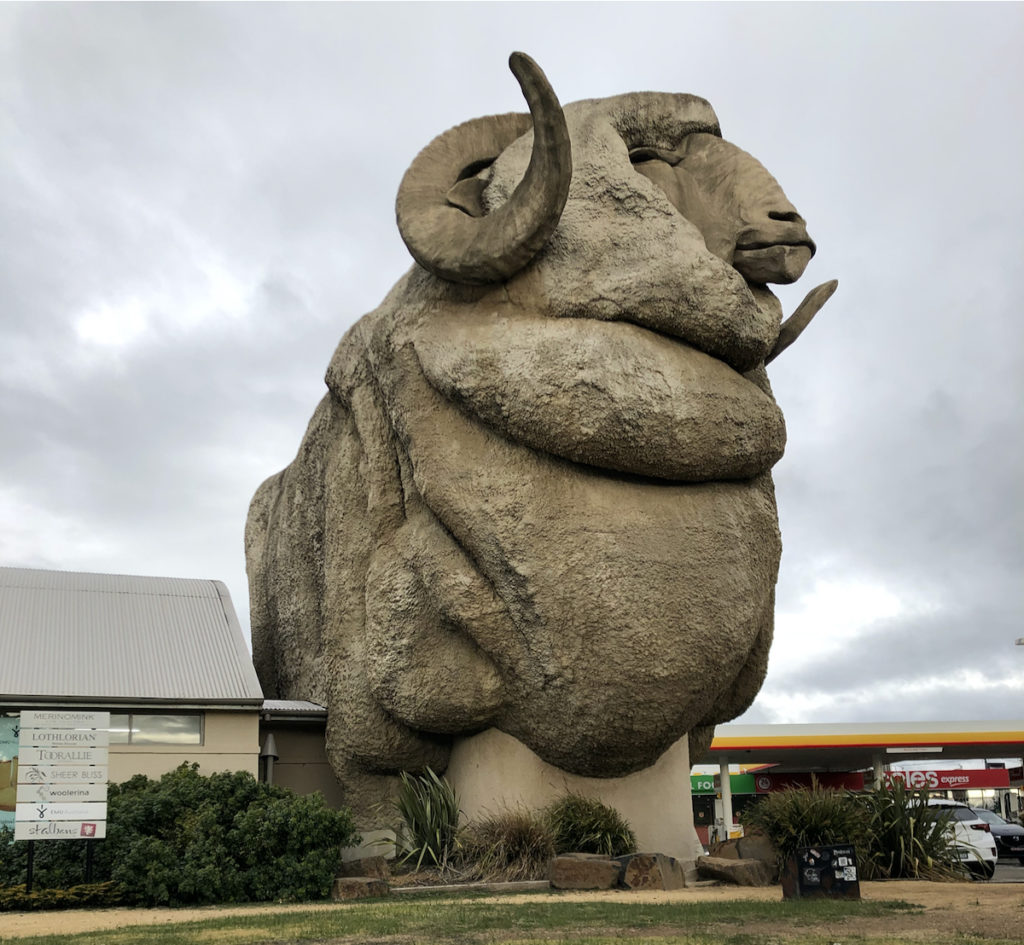
Meanwhile, as other wealthy countries were scrambling to get their citizens vaccinated, the Australian government lagged in making vaccines available, and early in the year Australia was the least-vaccinated of the OECD countries. We knew that borders, even internal, would not open until most of us were fully vaccinated.
Déjà vu all over again
Then came Delta. As had happened when covid began the year before, I was aware early on of how bad it might get, this time because I was hearing about it from friends in India. Turned out the quarantine system in Sydney was leaky – Delta got out into the city from an unvaccinated limo driver who had been transporting airline personnel to their quarantine hotels. Should he have been vaccinated and masked? Undoubtedly. Was he actually breaking any laws in not doing so? Hard to say – nothing was terribly clear about the laws. But the damage was done: we got Delta spreading into a largely unvaccinated population. The inevitable result was hard lockdown, which began in late June at the same time as Mitchell’s Term 2 vacation, and continued until late October. Schooling was remote throughout, and Mitchell didn’t even see any of his friends in person until early October.
Brendan and I managed to get our first and second Pfizer jabs in June and July. As more vaccine doses became available, the overwhelming majority of the Australian population rushed to get them – we’re now at almost 90% of the eligible (over 12) population fully vaccinated, and I suspect the 5-11 age group will follow quickly as soon as doses for them become available (early January).
Mitchell is part of that <12 cohort, so we need to continue to be careful for his sake even more than our own. It is neither a shock nor particularly an inconvenience for us to curtail the few activities we had started again – Brendan and I had been shopping in stores, eating in restaurants, and had seen two shows in actual theaters! But it’s time to stop: We’ve already both had multiple exposure notifications in the last 10 days.
Although the New South Wales state premier (governor) says he won’t do it, another lockdown is possible. He stuck with his plan to remove mask mandates and allow the unvaccinated to go anywhere starting December 15th – a decision that health experts and most of the electorate disagree with, in light of Omicron. Sigh. Government idiocy and unwillingness to act in favor of humans (over the interests of business) is drearily familiar.
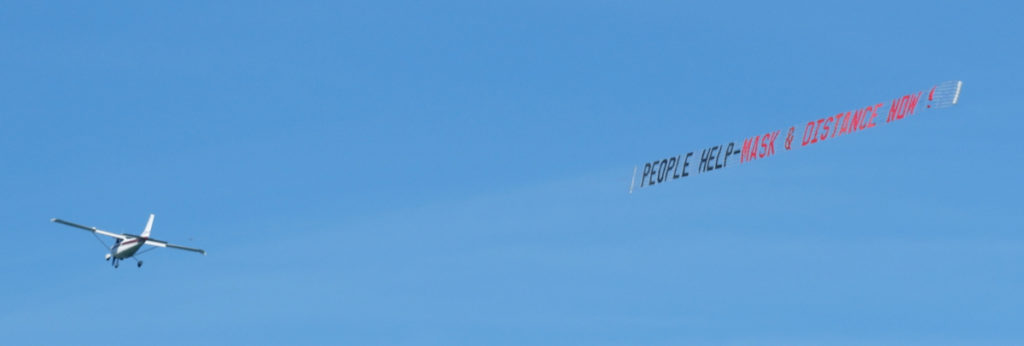
Our decision to rent a place with a good view has proven wise – even in lockdown (self- or government-imposed), we had something to look at every minute of the day, and lots of opportunities to get exercise. During the harshest weeks of lockdown no one was allowed more than 5km from their homes, but we were among the very fortunate with full access to beautiful beaches.
If only the weather had cooperated. Australia is now in its second year of a La Niña event, which means a cool, very wet summer. Some parts of the country (nowhere near us) are flooding, yet we still have the possibility of extreme bush fires from all the greenery that has grown thanks to last year’s abundant rain, if it ever gets a chance to dry out. A few days we’ve been blanketed in smoke from controlled burns in the nearby Royal National Park. We have air purifiers for our home, just as we did in California (in fact, one we brought with us and are running on a small transformer). The rain may ease up in January, as it did last year, giving us time still to enjoy beach life. (Though this year parts of NSW experienced major flooding in March.)
The world is so far away
What’s worst for me is that there is no possibility of near-term visits from friends and family. Last week Australia started allowing holders of some kinds of visas back into the country. This was largely a business decision: Australia’s economy relies on foreign workers (on “skilled worker” visas) for all kinds of jobs, especially in agriculture and hospitality. The universities rely on foreign students for tuition fees, and such students can and frequently do also work in hospitality and retail.
None of that helps me. In October, the Prime Minister made a pretty speech about “reuniting families,” meaning that Australian citizens and permanent residents could have their parents visit from anywhere in the world, as well as their partners on temporary visas. There had already been an exemption in place for dependent children to join their Australian parents. But there is still no provision for independent, adult children (such as my daughter) to be reunited with their parents in Aus. And apparently actually getting the needed exemption is hard – the Department of Home Affairs is taking up to seven months to issue them, making it impossible for working people to plan a trip.
The comments on news site articles about these problems are disheartening. It appears that many Aussies prefer the iron border as “a way to keep us safe,” and I suspect those are the people the government is listening to, even though about 30% of the population were born overseas and likely have family they want to see still in other countries.
The Australian border is now open both inbound and outbound for Australians and permanent residents, so I could theoretically travel to visit my daughter (in Italy) and friends (everywhere). But, but, but… Brendan and I lived for many years in the US under threat of separation by immigration issues (a story I will tell some other time). With borders opening and closing so rapidly worldwide, we are extremely reluctant to put any international boundary between us. Many couples were separated for up to two years by Australia’s harsh restrictions, and I don’t trust that that couldn’t happen again.
Brendan and I could travel together, but then we’re in the same situation vis-a-vis Mitchell, and we’re not going to bring him on a plane with us until he’s fully vaccinated. Maybe, covid permitting, we can all travel together before or during the northern hemisphere summer next year. Not knowing when it might even start to be possible to see my people is extremely distressing.
The pandemic has also made it difficult for me to make new friends to hang out with here in Aus. I wasn’t going to an office (much of the year I couldn’t have), so making friends via work was nearly impossible. I have one old school friend in Sydney whom we’ve seen a few times, but we’ve postponed a visit we were supposed to have last weekend because he lives with his aged mother and none of us wants to risk exposing her.
Thanks to Michele Playfair, whom we’d met a few years ago when Brendan spoke at the Yow! conferences, I do have a very fun and supportive group of online friends (physically, they’re mostly in Melbourne) – some days they’re the only people keeping me sane.
I stay in touch with friends and family elsewhere via phone/FaceTime/WhatsApp/Signal calls, which is better than nothing. It would be nice to see faces more often, but everyone is burned out on videocommunication by now, and given the time differences it can be hard to schedule.
House hunting
Our original plan was to rent for a year or two, explore and get to know various parts of the city, and then decide where we wanted to buy for the longer term. Turns out there were a few factors that this plan did not take into account.
One was Mitchell’s schooling. He has one more year of primary school (year 6, starting at the end of next January), and we would not want to force him to change schools again. There is no middle school – he’ll go straight into high school, the question is where exactly. In March he will take an exam to try to gain admission to a selective school – a public school which takes the best and brightest. When registering for the exam (which we did in October) you have to list your three top choices for the selective school. One is fairly near where we live now, one would be a bit more of a commute, and one would be right across Sydney. Many high schoolers commute long distances on public transport to go to selective or specialist schools – there’s a conservatory of music in downtown Sydney, and a few high schools specialized in sports. Presumably the kids talented enough to get into these are motivated to commute to them.
Brendan himself attended a selective school, with a 90 minute commute each way from where he lived in rural NSW. Nevertheless, it feels unfair to subject Mitchell to the daily grind of commuting that we ourselves have definitively renounced. So we’re trying to stay within easy range of his first-choice school, and hope that he gets into it.
If he doesn’t, another option would be private school, but almost all of them are religious (some flavors of which I could live with) and most are expensive. And we’re probably several years too late to apply even to be wait-listed – there is huge demand. So, in case he doesn’t make it into the selective school, we want to stay in one of the better public school districts.
Australian public schools are not funded by local property taxes the way US schools are, so the inequalities in facilities etc are not nearly as stark. But there are differences, some having to do with an area having parents who have time, energy, and know-how to be involved in how their kids’ schools are run. There also appears to be a vicious cycle where teachers prefer to be at the better schools, and the better teachers get to make those choices, leaving the worse teachers for the worse schools. So, as in the US, the school district you live in makes a difference.
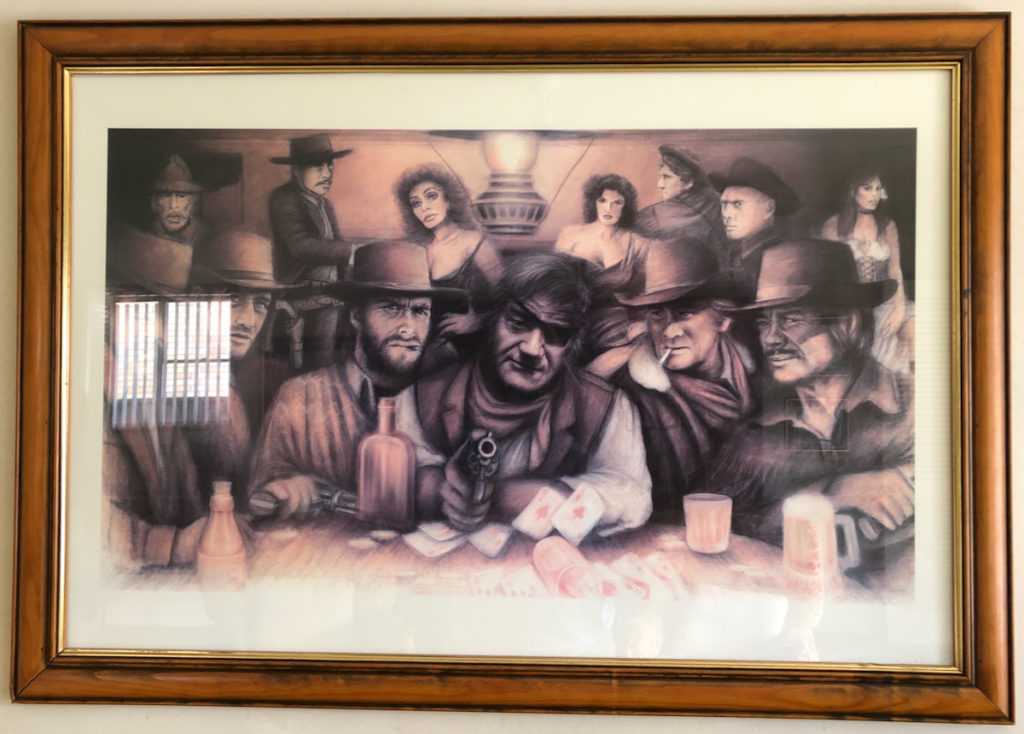
We are therefore living and looking in the Sutherland Shire, one of the wealthier areas of Sydney. Which leads to problem number two: housing prices in Sydney, as in most parts of the world, have exploded, increasing by around 25% this year. This insanity appears to finally be leveling off, but… ouch. We’ll end up spending about as much as we would have in San Jose, though we should end up with more house and a nicer location for that money. It’s hard to get far from water in the Sutherland Shire, whether that’s a view of the ocean from Cronulla (we can’t afford to buy here) or proximity to a bay with swimming areas and boat ramps.
The search is exhausting and often disheartening, but we’ve recently enlisted the help of a buyers’ agent. His decades of expertise in selling and inspecting Sydney homes are a huge help and offers some reassurance that we won’t get ripped off, or face brutal surprises later.
We could theoretically buy a less-than-perfect place and renovate it to be perfect for us, but that’s a world of pain that we do not want to get into right now. We don’t know enough about managing such a project, and for the past two years, between lockdowns and supply chain disruptions, it has been difficult to get construction projects completed. This time around, we need to keep things as simple as possible. Maybe in future we’ll be able to build a house exactly to our own specs.
Merry Christmas?
We have no particular plans for the holidays. Mitchell is on his long school break now until late January, but we can’t travel anywhere. Maybe we’ll manage some outdoor expeditions, eg to the zoo, if the weather ever cooperates. We had hoped to see the famous Sydney New Year’s Eve fireworks up close this year, but at the moment I’m not sure we should be among crowds even outdoors, and there’s a good chance it will all get rained out anyway.
Here’s wishing you all at least a peaceful and uneventful holiday season, and a better 2022 for all of us.
top: Early morning meetings with the US meant I saw a lot of sunrises – but I was rarely up earlier than the surfers.

